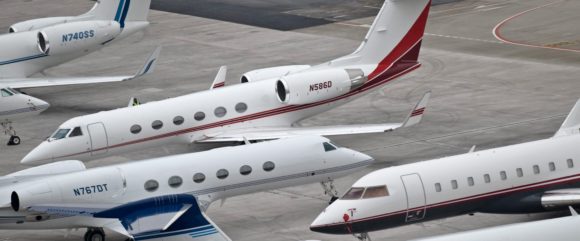Engine maker Rolls-Royce will reduce its global workforce by at least 9.000 jobs out of 52.000, the Derby-based company announced on May 20. Rolls finally confirmed reports from late April that its if facing a significant reorganization, which comes as a direct effect of the impact on Covid-19 on its business. In April, the media reported on some 8.000 job losses, so the pain will be felt even deeper. Its Civil Aerospace division will be hit particularly hard.
The restructuring is what Rolls-Royce calls the ‘medium-term’ impact of Covid-19. “This is not a crisis of our making. But it is the crisis that we face and we must deal with it”, CEO Warren East said in a press statement. “Our airline customers and airframe partners are having to adapt and so must we. Being told that there is no longer a job for you is a terrible prospect and it is especially hard when all of us take so much pride in working for Rolls-Royce. But we must make difficult decisions to see our business through these unprecedented times.”
At its Annual General Meeting on May 7, East reported a significant drop in business for Civil Aerospace. Engine flying hours were -40 percent between January and April and -90 percent in May, translating in fewer shop visits for maintenance, repair, and overhaul for its Trent engines.
With both Airbus and Boeing announcing lower production rates for their Rolls-Royce-powered widebodies from 2021 (Airbus A330neo/Trent 7000, A350/Trent XWB, Boeing 787/Trent 1000) from 2021, Rolls-Royce has revised its own rates. It expects to produce only 250 large turbofans this year compared to 450 announced in its guidance last February.
Rolls’ Defence business remains solid and less affected by the Covid-crisis.
Reorganization comes on top of restructuring
The reorganization announced today will reduce annual spending by GBP 1.3 billion, of which 700 million will come from headcount reductions. The cash restructuring costs will be GBP 800 million, incurred between 2020 and 2022. Rolls-Royce is in negotiations with unions and workforce representatives about the redundancies and has not disclosed which specific sites will be affected. Some 4.000 employees were already furloughed in the last two months and salary cuts were imposed on management positions.
The latest job reduction is additional to the restructuring plan that has been implemented in June 2018. Since then, some 2.900 staff have been made redundant as part of a plan to reduce headcount by 4.600 the end of this year to less than 25.000. As part of the plan, Rolls wanted to generate GBP 400 million in annual efficiency costs. Of this, 269 million was already generated in 2019.
CFM expects to produce only 1.000 LEAPs this year compared to 1.700 last year. (CFM)
Other engine makers face difficulties too
Rolls-Royce is not the only engine maker that has to face a weaker market. At its FY2019 presentation in April, Safran said it will reduce production of the CFM LEAP-family to some 1.000 this year compared to 1.736 in 2019. Some 35 percent of its workforce has been placed in furlough but no reductions have been announced. Capex will be reduced this year to 60 percent of 2019-levels.
General Electric has seen shop visits of commercial engines drop by 60 percent since January, while new engine installations have been down -45 percent. The need for spare engines is down by -60 percent, it said in its Q1 presentation.
GE counts on the recovery of the single-aisle market first, in which it has the CFM-partnership with Safran. The widebody/large engine market that includes the GEnx, GE90, and GE9X will be affected longer. In Q1, GE delivered 472 engines, in the whole of 2019 2.863.
Pratt & Whitney-parent Raytheon said in its Q1-results documents that is expects a significant effect of Covid-19 on its aerospace business. It hasn’t quantified this nor announced any rate and job reductions directly related to its commercial engine production, which predominantly consists of the PW1000 Geared Turbofan-family.
Views: 1



